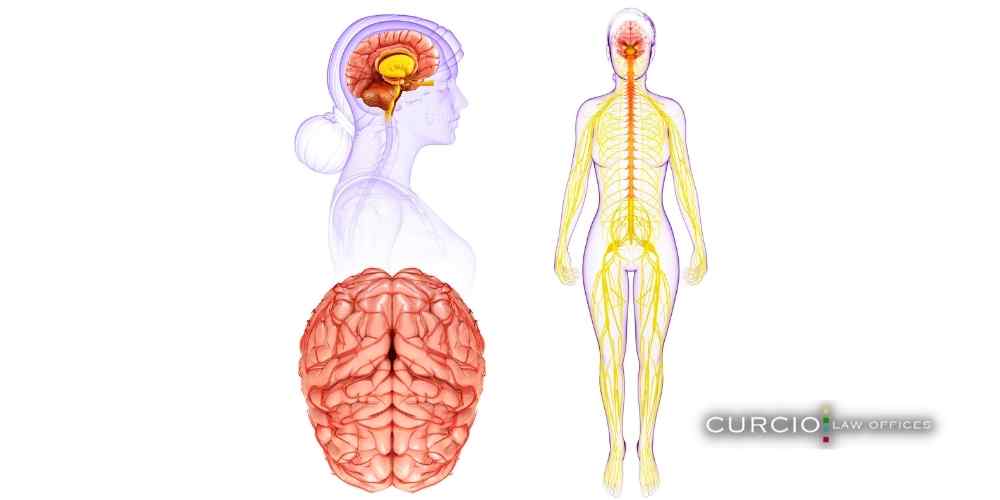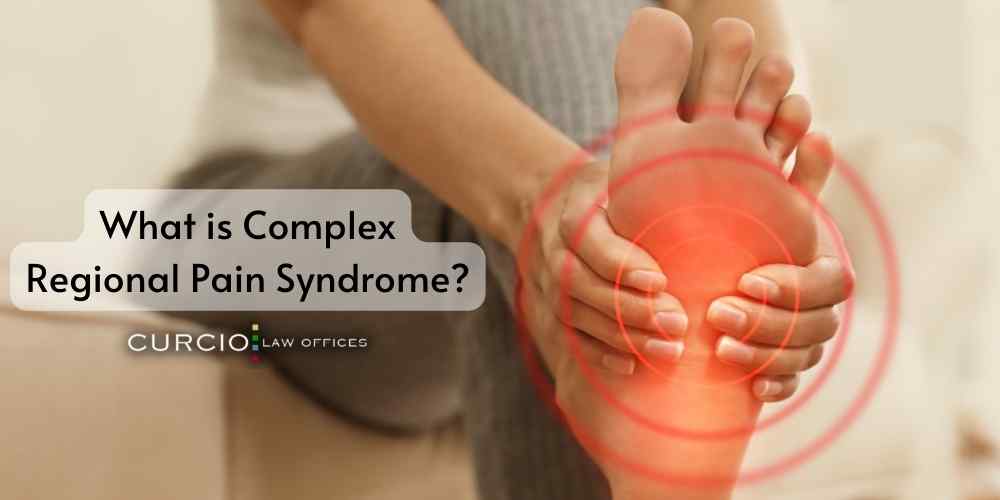Complex regional pain syndrome (CRPS) is a highly controversial condition within the medical field. It’s fairly rare, and characterized by chronic pain and swelling (usually in a limb or extremity), skin temperature changes, skin color and texture changes, increased sensitivity to sensory stimuli, and decreased mobility. The widely controversial part about CRPS is that many medical professionals aren’t sure what causes these painful symptoms.
As many as 90% of patients develop CRPS after suffering a traumatic injury, such as a broken bone or a laceration. Meanwhile, fewer patients seem to develop this condition out of nowhere, leading doctors to believe that the cause is nervous system dysfunction. Regardless of the cause, CRPS is an incredibly painful and debilitating condition that can completely change the course of someone’s life and even put them into serious debt from the combination of medical bills and lost wages.
The good news here is that patients whose CRPS was triggered by traumatic injuries may be able to take legal action, especially if they can prove that someone else’s negligence caused their injuries. If you suffered traumatic injuries from a car accident, a slip and fall accident, or even a medical malpractice incident that later evolved into CRPS, you have grounds to speak to a Chicago personal injury attorney at Curcio & Casciato. Since 1957, we have recovered millions of dollars in settlements on behalf of our injured clients. Allow us to take on your case and help you recover a fair settlement for your suffering.
Call 312-321-1111 to schedule a free consultation at Curcio & Casciato today.
What is Complex Regional Pain Syndrome (CRPS)?

Complex regional pain syndrome (CRPS) – formerly known as reflex sympathetic dystrophy syndrome – is a rare and disabling condition that’s characterized by chronic pain and swelling in the limbs, skin temperature and color changes, decreased mobility and functionality, among other symptoms.
CRPS is a very controversial condition among medical professionals. Many aspects of the condition are not well understood, such as what causes it. But at this point in modern medicine, many medical experts believe that complex regional pain syndrome is the result of a dysfunctional central nervous system or peripheral nervous system.
The central nervous system is the brain and spinal cord, and the peripheral nervous system is all the nerves that branch off the brain and spinal cord. Our nervous system is responsible for almost everything: breathing, moving, and feeling sensations such as temperature and pain.
Pain signals are sent to the brain and spinal cord through the peripheral nervous system. These signals obviously exist to notify us of injury or illness. In a patient with complex regional pain syndrome, doctors believe that their dysfunctional nervous system causes excessive or exaggerated pain signals that can’t be turned off, even when the patient is sitting still and not doing anything to cause such pain.
Types of CRPS
There are two main types of CRPS:
- Type 1: Formerly known as reflex sympathetic dystrophy, this type of CRPS occurs without underlying nerve damage.
- Type 2: Formerly known as causalgia, this type of CRPS occurs after pre-existing nerve damage caused by traumatic injuries or neurological disorders.
Patients with either type of CRPS can experience severe pain and other symptoms for a short period of time (acute) or several months or years (chronic). Every patient is different.
How Common is Complex Regional Pain Syndrome?
Complex regional pain syndrome is still considered a rare disorder, affecting about 200,000 Americans every year, according to the Cleveland Clinic. It’s more common for adults to develop CRPS than children. Additionally, women tend to suffer from this condition more often than men do. The disorder typically develops around 40 years of age.
CRPS Symptoms

CRPS sufferers tend to experience the following symptoms:
- Severe pain in the affected limb or extremity. The pain in the affected body part can be constant or intermittent. It can also be described as stabbing, stinging, tearing, or burning pain.
- Intense pain in response to things that normally wouldn’t be that painful or uncomfortable, such as gentle skin touching, itching, pinching, cold or warm temperatures, etc.
- Joint pain in the affected limb.
- Numbness in the affected area.
- Swelling in the affected area.
- Skin temperature changes. For example, the temperature of one leg may be drastically different from the temperature of the other leg.
- Skin color changes. Patients may experience purple or red-tinted skin, very pale skin, or blotchy skin.
- Skin texture changes. Patients may notice their skin texture becoming thin, sweaty, or shiny on the painful limb.
- Abnormal hair and nail growth. Patients may experience rapid nail and hair growth or no growth at all.
- Decreased ability to move or function.
- Muscle spasms, weakness, or tremors.
The severity and frequency of these symptoms vary significantly from patient to patient.
Common Causes of Chronic Pain Syndromes Like CRPS
Complex regional pain syndrome (CRPS) is a very complicated disorder, so much so that medical experts don’t have a good understanding of what causes it. The majority of the time (in approximately 90% of cases), CRPS occurs after some traumatic injury or nerve trauma.
The injury is thought to have permanently damaged sensory and autonomic nerve fibers in the affected limb, leading to CRPS symptoms within four to six weeks of an injury. Sensory and autonomic nerve fibers send pain, temperature, and itch signals to the central nervous system. Not only that, but these tiny nerve fibers also control surrounding blood vessels and the overall health of nerve cells.
The most common traumatic injuries that are associated with the development of CRPS are crush injuries or bone fractures. More specifically, a wrist fracture is closely associated with the later development of CRPS. Doctors think the combination of a displaced or splintered bone and a tight cast can permanently damage nearby nerves.
People may also develop complex regional pain syndrome from surgery, severe muscle strains or sprains, and even burns and cuts on the skin. All of these injuries have the potential to damage nearby nerves and cause severe pain. Even if these injuries don’t directly damage nerves, patients can still develop CRPS in the location of their preceding injury.
There have also been cases of CRPS that appear after a major health scare, such as a heart attack or a stroke. In fact, a 2022 study states that 18.6% of all stroke patients included in the study went on to develop complex regional pain syndrome.
Many CRPS cases aren’t preceded by a traumatic injury, nerve injury, or health scare at all. In these cases, doctors believe the cause is some sort of immune or inflammatory reaction in the central and peripheral nervous systems.
If you’ve sustained a crush injury caused by negligence, contact our Chicago crush injury attorneys for a free consultation.
Factors That Increase the Risk of Long-Term Severe Pain
There are a few factors that can increase a patient’s risk of developing CRPS, including:
- Poor Nerve Health: Certain health conditions, such as diabetes and neuropathy, can damage the overall health of nerve cells. Additionally, chemotherapy treatments and even smoking can cause long-term, irreparable damage to the nerve cells.
- Immune System Problems: Many CRPS patients have elevated levels of inflammatory chemicals called cytokines, suggesting an underlying autoimmune or inflammatory issue potentially caused their condition.
- Genetics: Much more research needs to be done into what causes CRPS. However, some studies have revealed that there may be a genetic component involved in CRPS, meaning that this condition can be passed down through families.
CRPS Diagnosis

Because this condition is rare and not well understood by many medical professionals, diagnosing CRPS can be challenging. In fact, many CRPS sufferers are misdiagnosed by their doctors for years and, therefore, do not receive the effective pain management and treatment they need. If this has happened to you, contact a Chicago medical misdiagnosis attorney today.
Doctors tend to use a process called differential diagnosis.
What is differential diagnosis?
Doctors typically start the diagnostic process by listening to patients’ symptoms and reviewing their medical history. They will verify that the patient’s intense pain is not possibly stemming from some other condition or injury that has similar symptoms.
Doctors will probably also perform a physical examination to look for abnormal skin temperature, color, or texture in the affected limb. They may also see if the patient has an exaggerated pain response to temperatures, skin touching, pinching, etc.
There is not one single test that can diagnose complex regional pain syndrome (CRPS), so doctors often have to conduct numerous tests to make an accurate diagnosis. A magnetic resonance imaging (MRI) or an ultrasound may or may not effectively show nerve injuries. If a doctor suspects neuropathy during the differential diagnosis process, they may also order an electromyography (EMG), which may help identify the source of pain in the affected limb.
CRPS Treatment in an Affected Limb
Some patients experience CRPS for a short time, while others experience this disorder for life. Regardless, the ultimate goal is pain management so the patient can move and function as much as possible.
It’s crucial to begin treating pain as soon as possible after a CRPS diagnosis because, naturally, intense pain can lead to a lack of movement. This lack of movement can cause the affected limb to stiffen, often worsening pain.
Doctors usually resort to a combination of the following treatments for CRPS (formerly known as reflex sympathetic dystrophy syndrome):
Physical or Occupational Therapy
Physical therapists can provide pain relief to CRPS patients by helping them improve blood flow, move, stretch, and build strength in their bodies. Meanwhile, an occupational therapist can teach patients new methods to accomplish their daily tasks with their disabilities in mind. This allows patients to function and move as much as possible in their day-to-day lives.
Pain Relieving Medications
There is not one pain-relieving medication specifically designed for managing CRPS symptoms, so often, finding the right medication is trial and error. Doctors may try NSAIDs, analgesic patches and creams, certain types of antidepressants, anti-seizure drugs, and bisphosphonates. Doctors may even use Botox injections to relax the affected nerves and muscles.
Lifestyle Changes
Lifestyle changes such as managing pre-existing health conditions that affect nerve and immune health, wearing compression stockings, elevating the affected limb, and exercising daily may help reduce pain.
Mental Health Counseling
The pain and other symptoms caused by CRPS can be very traumatic for certain patients. This condition can be completely debilitating, to the point where the patient has a very low quality of life. They may be unable to work, see friends and family, or travel.
All of this can lead to significant anxiety, depression, and even post-traumatic stress disorder (PTSD). Severe emotional stress can possibly worsen pain and other CRPS symptoms. Counseling can help patients cope with their disability and keep their emotions stable, not to make their daily pain worse.
Sympathetic Nerve Blocks
Sympathetic nerve blocks can relieve pain in some patients. Doctors will inject anesthetics near the spine to directly block the sympathetic nerves. This treatment can be especially helpful for CRPS patients with neurological disorders or sympathetic nervous system dysfunction.
Spinal Cord Stimulation
Spinal cord stimulation (SCS) has emerged as a promising treatment for individuals suffering from Complex Regional Pain Syndrome (CRPS). This therapy involves implanting a device that sends low levels of electrical stimulation to the spinal cord. These electrical impulses interfere with transmitting pain signals to the brain, thereby reducing pain perception.
SCS is particularly effective in CRPS cases where other treatments have failed, offering significant pain relief and improving quality of life. Additionally, it’s adjustable and reversible, allowing for tailored pain management and the option to discontinue if necessary. This makes SCS a valuable option for those grappling with the debilitating effects of CRPS.
Can You Sue for Complex Regional Pain Syndrome?

Yes, you can sue for complex regional pain syndrome (CRPS) if your condition is the direct result of a traumatic injury caused by someone else’s negligence.
For example, people can develop CRPS following a major car accident caused by a drunk driver, especially if the crash victim broke numerous bones during the wreck. If this has happened to you, contact our Chicago motor vehicle accident attorneys.
People who slip, trip, and fall due to premises liability violations may also have grounds to take legal action. Our Chicago premises liability attorneys can help prove that CRPS developed shortly after slip and fall injuries.
Victims of medical malpractice can even develop CRPS from surgical errors, IV placement errors, and even medication errors that lead to major complications such as strokes or heart attacks. Our Chicago medical malpractice attorneys can help you determine if you have grounds to file a claim.
Because of the controversy and confusion surrounding CRPS, it can be incredibly difficult to determine the cause of the condition and whether someone’s negligence caused the injuries that preceded it. That’s why hiring an experienced team of personal injury attorneys and medical experts is so important. The combination of legal and medical experts can help prove the Illinois 4 D’s of negligence in a personal injury claim:
- Duty of Care: Everyone owes each other a specific duty of care to act carefully and safely. This means drivers should drive safely, soberly, and carefully to avoid car accidents. Property owners should take care by ensuring their premises are safe for visitors. Doctors, on the other hand, are held to an even higher standard of care, called the medical standard of care in Illinois, which means that they should provide safe and competent medical care to their patients.
- Breached Duty of Care: The defendant breached their duty of care through negligent actions or inactions. For example, a driver began texting and driving, which is a dangerous and distracting practice. A property owner failed to set out a “wet floor” sign under a leaky spot in the ceiling. A doctor provided poor medical care in one way or another.
- Causation: The negligent party directly caused the plaintiff’s injuries, and later, these injuries triggered complex regional pain syndrome.
- Damages: The injured plaintiff suffered a wide variety of damages, not just from their original injuries but from their later development of complex regional pain syndrome. Therefore, they deserve fair financial compensation from the negligent party.
CRPS Damages
The damages caused by traumatic injuries and complex regional pain syndrome are extensive. The plaintiff basically suffers extensive medical debt, lost wages, and pain and suffering from their initial injury, but from their later development of complex regional pain syndrome as well. This level of physical and financial distress is enough to change the entire course of someone’s life.
Chicago personal injury attorneys at Curcio & Casciato can help victims recover financial compensation for the following types of damages:
- Past and future medical bills
- Past and future physical therapy bills
- Expenses associated with necessary medical equipment such as wheelchairs and other assistive devices
- Full-time caregiver expenses
- Lost wages
- Loss of earning capacity
- Physical pain and suffering
- Emotional distress
- Mental health counseling costs
- Permanent scarring, disfigurement, and/or disability
- Loss of enjoyment of life
- Loss of consortium
The exact settlement amount will vary depending on each CRPS plaintiff’s situation and how much damage they have suffered due to negligence. However, most plaintiffs suffer extensive losses in this situation, so settlement amounts can easily reach into the multi-millions.
A Chicago personal injury lawyer at Curcio & Casciato can help victims accurately calculate the dollar amount of general and special damages.
Call Chicago Personal Injury Lawyers at Curcio & Casciato Today
If you have suffered a traumatic injury or health complication that later evolved into complex regional pain syndrome, you may have grounds to take legal action against the negligent party. CRPS is a very complex and confusing condition, which is why it’s so important to hire an experienced team of personal injury attorneys to help you prove that negligence directly caused your injuries and, therefore, your case of CRPS.
Chicago personal injury attorneys at Curcio & Casciato will closely work with medical experts to ensure we build a strong case with extensive evidence to prove your claim. Above all else, you can trust that our experienced attorneys will protect your legal rights. Call 312-321-1111 to schedule a free consultation at our law firm today.



